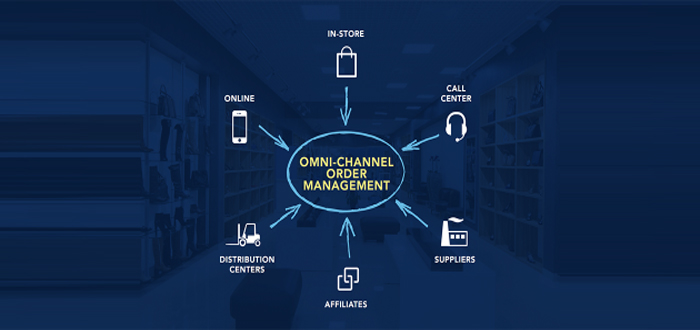-
Nutrivend selects Forterro’s Orderwise to support online expansion and streamline operations - April 11, 2025
-
ARROWXL LAUNCHES AMBITIOUS ZERO WASTE ROADMAP - April 8, 2025
-
THE BCMPA’S NEW CAMPAIGN DRIVES OUTSOURCING SUCCESS IN Q1 - April 7, 2025
-
BLACKOUT TECHNOLOGIES TARGETS TELEMATICS-INTEGRATED MOBILE DEVICE BLOCKING TO COMBAT SMARTPHONE DISTRACTION - April 1, 2025
-
OpenADR Alliance announces first OpenADR 3.0 certified products with EVoke Systems, E.ON Energy and Universal Devices - March 25, 2025
-
Growing fulfilment and contract packer appoints new Managing Director - March 25, 2025
-
When is it time to invest in a WMS? Understanding the key trigger points - March 25, 2025
-
eCapital helps Vantage Recruitment on its journey to financial success - March 24, 2025
-
Hugo Beck Celebrates 70 Years of Packaging Innovation with Open House Events - March 20, 2025
-
PROLOG FULFILMENT SUPPORTS LUNA DAILY’S COMMITMENT TO BETTER BODY CARE FOR ALL WOMEN - March 19, 2025
The Brain of Omnichannel is Enterprise Order Management.
Q: Retailers face any number of challenges as they move deeper into an omnichannel operating model. Why is order management a smart place for them to put their focus?
BRIAN KINSELLA: When you’re talking about the direct customer impact elements of omnichannel operations – such as meeting customer service levels, determining where a product can be fulfilled from and how the retailer gets it to the customer – order management is the brains of that operation. Whether you’re talking about a customer on a website, in a store or calling a call center, the chances are good that whatever they will do during that transaction will either impact order management, or order management will impact them.
Our observation is that more and more retail transactions are looking like an order that you would have seen in an e-commerce or catalog business, as opposed to the traditional store transaction. With an increasing number of transactions, there’s at least some sort of flexible fulfillment involved. It’s all part of the move of digital channels and selling assets making their way into the brick-and-mortar store environment. In fact, we’re seeing that no matter what kind of selling system is being used – e-commerce, mobile, a kiosk – retailers are trying to make those applications do as little work as possible around inventory visibility and product availability. They are being set up simply to ask questions: Can I get this item that a customer wants? Is it available here in the store, or across town? Order management handles that, and also uses business rules, so it’s not just Can I sell this product to you; it’s Should I sell it to you from a particular location? It’s about setting expectations.
Q: Granular, enterprise-wide levels of inventory visibility seem to be a prerequisite for successful omnichannel order management. Are retailers making good progress toward this goal?
KINSELLA: Seeing any item on any shelf in any store is a key element, and it’s a level of visibility that many retailers have been chasing. Partly it’s a technical problem to solve – building the ‘pipes’ to get transaction flow into a centralized engine such as order management. We’re seeing leading retailers already moving beyond visibility and getting to availability. The phrase I use to make the distinction between these two is, Just because the product is there doesn’t mean you should sell it. This is especially true with a pick up in-store or a ship from store situation. If it’s the last unit in the store and it’s sold out from under a brick-and-mortar customer, the chances for disappointment are high.
Q: How does an order management solution help balance these competing interests within a retail organization?
KINSELLA: When retailers start to loop the store into the order management and fulfillment processes, the store merchants both need and deserve a seat at the table. They are trying to keep the store stocked at a certain level, not just to sell product but because of the customer experience and the store’s appearance, so they need to have controls around how many units they are willing to let flow up and out of the store to other channels. For one brand, they might let 25% of the units be available to digital channels; for another brand, they might be willing to let 50% be available to other stores for save-the-sale situations. These are the types of business rules that can be built into a centralized order management solution. Store operations are also heavily impacted by omnichannel order fulfillment. Running stores used to mean receiving inventory in the back door, having customers pay for it and walk out the front door with the items. Now there are these other sources of demand that require the store manager to get items off the shelf, box them up and have them ready for the UPS guy to pick up. Just the labor required to get orders out the door is not insignificant, and it can have a meaningful impact on both the top and bottom lines.
Q: What about decisions at the enterprise level?
KINSELLA: Different stores’ capacities to fulfill orders need to be built into a centralized order management engine. Not all stores are created equal, and a retailer’s ‘A’ stores, with larger footprints and higher staffing levels, are likely to lend themselves better to packing and shipping out cartons than a ‘B’ or ‘C’ store. Retailers also need to balance workloads in real time, so they might institute a rule that says they never send more than 50 orders to any store on a given day. They can also smooth out and balance orders across different stores. This raises the probability that all the orders will go out that day, as opposed to piling up if they’re all trying to be fulfilled from a single location. The order management engine has to consider all these elements: availability of product and of people; are there enough units in the store to safely take some of them off the shelf; and the logistical considerations of shipping to meet customer service level expectations.
Q: It sounds like quite a set of challenges. What are the benefits?
KINSELLA: The most progressive retailers are trying to use omnichannel selling as a strategic advantage. For example, if they have inventory in stores that is performing below their sales plan, they can use order management to seek out these ‘trapped’ or ‘distressed’ units in order to sell them in other channels. I’d say the best-performing retailers see omnichannel selling this way, but I’m not sure anyone has it working as a finely tuned machine. We’re still early in the cycle of using store inventory to fulfill digital orders, and there’s still more optimization that needs to be done – but that optimization lives in the order management system, because it’s the infrastructure that connects all the selling channels. http://www.manh.com

































